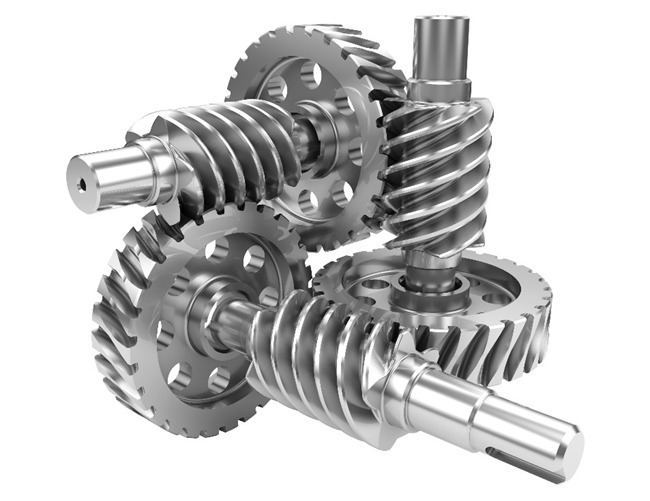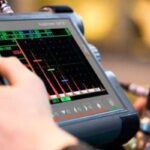Bevel gears are useful when the direction ofa shaft’s rotation needs to be changed. They are usually mounted on shafts that are 90 degrees apart, but can be designed to work at other angles as well.
The teeth on bevel gears can be straight, spiral or hypoid. Straight bevel gear teeth actually have the same problem as straight spur gear teeth, as each tooth engages; it impacts the corresponding tooth all at once.
Just like with spur gears, the solution to this problem is to curve the gear teeth. These spiral teeth engage just like helical teeth: the contact starts at one end of the gear and progressively spreads across the whole tooth.

Straight bevel gears Spiral bevel gears
On straight and spiral bevel gears, the shafts must be perpendicular to each other, but they must also be in the same plane. The hypoid gear, can engage with the axes in different planes.

This feature is used in many car differentials. The ring gear of the differential and the input pinion gear are both hypoid. This allows the input pinion to be mounted lower than the axis of the ring gear. Figure shows the input pinion engaging the ring gear of the differential. Since the driveshaft of the car is connected to the input pinion, this also lowers the driveshaft. This means that the driveshaft
doesn’t pass into the passenger compartment of the car as much, making more room for people and cargo.


